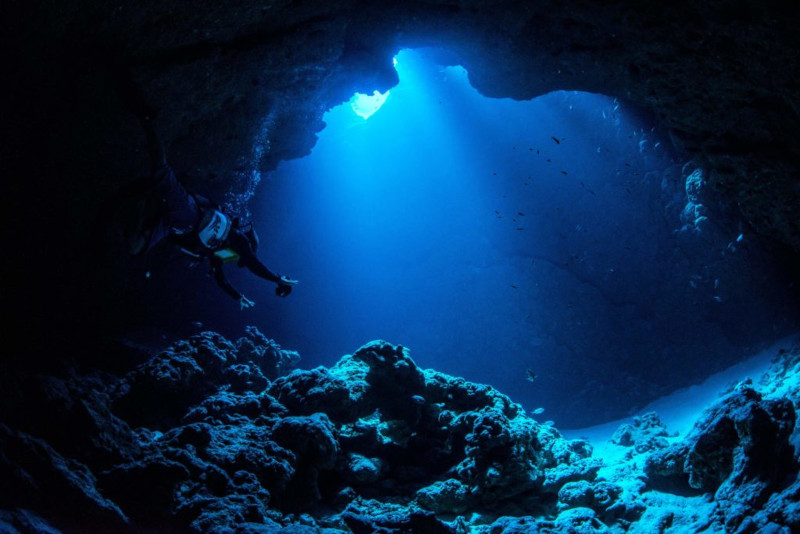Mariana Trench Facts
- The Mariana Trench forms an enormous trench located in the Pacific Ocean. It also contains the deepest known point in any ocean.
- Due to the sheer extent of the Mariana Trench, no single photograph displays it in its entirety. Here we present a sonar generated compilation image.
- This incredible feature of geology measures roughly 1,580 mi (2,550 km) in length.
- It also has an average width of about 43 mi (69 km). The section that contains the deepest parts of the trench bears the name of Challenger Deep.
- In this location, the depth measures an astonishing 36,069 ft (10,994 m).
- At this depth, the water pressure totals nearly 1,086 times that of the air pressure at sea level.
Related Articles
Mariana Trench Geology
The Mariana Trench also forms part of the Izu Bonin-Mariana Arc convergent boundary system. This forms the boundary layer between two tectonic plates.
Here, the western edge of the Pacific Plate has been subducted beneath the smaller Mariana Plate. This downward thrust of the earth’s crust is what has created the incredible feature.
This same motion is also responsible for the creation of the Mariana Islands. The Pacific Plate remains among the oldest on earth. In fact, it is about 170 million years old.
The trench is also subject to numerous earthquakes. This is due to the same factors which created the Trench and the Mariana Islands.
Mariana Trench Exploration and Protection
Due to the extreme depth and conditions, only four individuals have ever successfully explored the bottom of the Mariana Trench. The latest of these was James Cameron. He achieved the feat in the craft named the Deepsea Challenger, in 2012.
This photo is also one of the few ever taken of the floor of the formation, on site. In accordance with international law, the United States, in North America, has authority over the majority of the Mariana Trench.
The entire portion of the trench under the auspices of the United States was named a protected zone in 2009. This also forms the greater portion of the Marianas Trench Marine National Monument.
Features Sharing Its Region
Check out our other articles on 5 Remarkable Bolivian Herbaceous Plants, Serval, Lake Maracaibo, Cairns Birdwing, Apple of Sodom, Rose’s Ghost Frog, Weedy Seadragon, American Alligator

